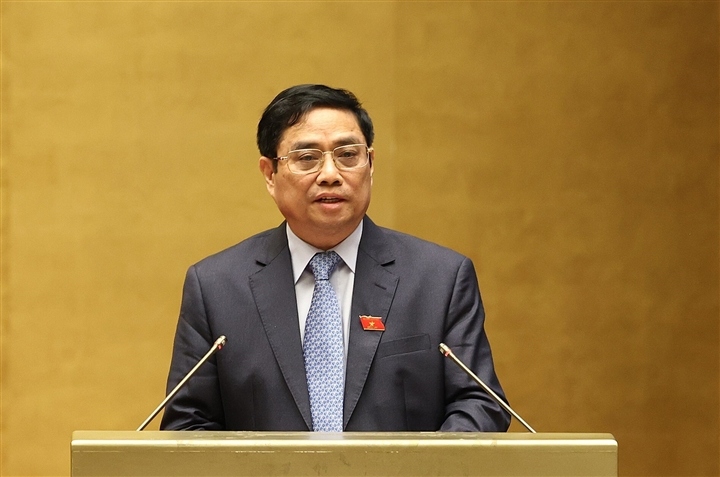Gov’t sets 6-6.5% GDP target for Vietnam in 2022
Vietnam’s economy is projected to grow by between 6% and 6.5% next year, Prime Minister Pham Minh Chinh unveiled the Government’s target at the ongoing session of the National Assembly in Hanoi on October 20.

The Government will also strive to keep the consumer price index (CPI) at about 4%; and the State budget deficit over GDP at about 4%, he said.
Among other key indicators, the rate of trained workers will be raised to about 67%, the rate of poor households will decrease by about 1-1.5%, and about 92% of the population will access health insurance services.
The PM admitted that the COVID-19 pandemic has taken its heavy toll on the national economy, posing a great challenge to Vietnam to implement its socio-economic tasks for 2022 and beyond.
“With the combined strength and resolve from the entire Party, army and people, we are confident that we will deliberately control and beat the pandemic to create conditions for the economy to get back on track and further integrate into the global economy,” stressed Chinh.
To meet the targets set for 2022, the PM affirmed that the Government will work towards achieving the ongoing goal of safe and flexible adaptation to and effective control of COVID-19, while seizing upon every opportunity for economic recovery.
The Government will try hard to maintain macroeconomic stability, control inflation, ensure major balances, and improve the autonomy, resilience and adaptability of the economy, he stressed.
According to the PM, Vietnam failed to fulfil four out of 12 targets set for 2021 due to the negative impact caused by the COVID-19 pandemic. Notably, the yearly GDP growth rate is estimated at 3-3.5% compared to the 6% set target, and the GDP per capita is estimated at US$3,660 – 3,680 compared to the US$3,700 target.
Despite securing a GDP growth rate of 5.64% in the first six months of this year, the national economy surprisingly contracted by 6.17% in the third quarter, making the nine-month growth rate rise by just 1.41% - a record low figure.
The macro-economy still faces potential risks when inflation pressure increases and exports decelerate. In addition, import and export activities depend a lot on the FDI sector and a few major markets. The COVID-19 pandemic has also dealt a heavy blow to the economy disrupting supply and production chains in some industries.

